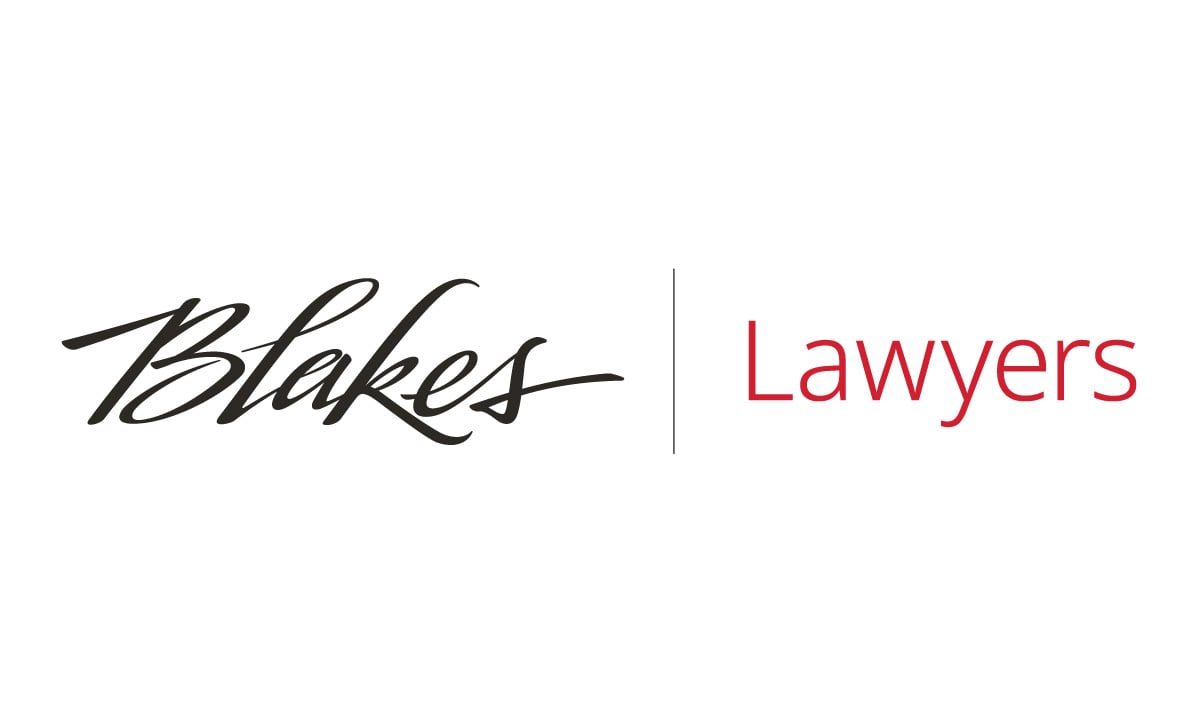Dispute resolution in private equity transactions is critical to ensuring smooth operations and maintaining relationships between the parties involved. In Canada, private equity transactions can be complex, involving multiple stakeholders, significant financial investments and intricate legal agreements. Effective dispute resolution mechanisms are essential to address conflicts that may arise during the lifecycle of these transactions.
Common disputes in private equity transactions
Private equity transactions often involve complex financial and operational arrangements, which can lead to various disputes between the parties involved. Here we discuss some of the most common disputes that may arise and tips to effectively resolve them.
- Valuation disputes
Valuation disputes arise when parties to the transaction disagree on the worth of a target company or its assets. Key drivers of these disputes may involve differing perspectives on the company’s prospects and risks, or differing assumptions about revenue growth, profitability, market conditions, and appropriate discount rates. For example, a buyer may believe that a company's future risks warrant a lower valuation, while a seller may argue that its growth opportunities justify a higher price.
Shareholders, such as those of portfolio companies, may also bring legal action against a private equity firm and against the portfolio companies where they are dissatisfied with the process and value of the sale of the company. Therefore, it is important to pay close attention to shareholder agreements even before litigation arises, as they often contain key clauses that can be used in the context of litigation and even inform litigation outcomes.
Valuation disputes may require renegotiations and delay transactions. The assistance of third-party valuation experts, mediators or arbitrators may be necessary to resolve these issues. Carefully structuring an agreement that includes, for example, an earn-out provision, may mitigate valuation disputes by tying future payouts to the company’s actual performance.
- Breach of representations and warranties
In private equity transactions, representations and warranties are important in ensuring that all parties are clear on the state of the company at the time of the deal. These provisions may involve assurances about the portfolio company’s financial health, liabilities, intellectual property, and other critical business aspects. Misleading or inaccurate representations can lead to disputes and potential litigation if issues arise after the deal closes. For example, where a private equity-backed seller intentionally lies or does not provide the full truth regarding significant issues with its compliance with regulatory obligations, a court may award damages to the buyer.[1]
Therefore, it is essential that these clauses are clearly defined, carefully negotiated and devoid of any ambiguity, as a breach of any representation or warranty could lead to claims for damages. In a private equity context, buyers should ensure thorough due diligence and confirm the accuracy of any representations or warranties made by the seller. Meanwhile, sellers should be cautious about overpromising or misstating any key conditions.
Additionally, the concept of sandbagging often arises as a concern in negotiations and refers to a situation where a buyer enters into a contract based on representations and warranties it knows to be false, only to bring an action for a breach of those representations and warranties after closing. While this concept has rarely been litigated in Canada, there are practical steps that may be taken to prevent such a dispute from arising.
Where a contract is silent on sandbagging, a court may allow a buyer to obtain the benefit of a representation or warranty that it knew to be false.[2] Therefore, it may be prudent to include a “pro-sandbagging” provision, which permits a buyer to take action for any false representations or warranties it discovers before closing but nevertheless closes the deal, or an “anti-sandbagging” provision, which provides the seller with a defence against a claim by the buyer, should the buyer be aware of a false representation or warranty prior to closing.
- Earn-out disputes
An earn-out involves a portion of the purchase price being contingent upon the future financial success of the target company, usually measured by metrics like revenue or EBITDA. Disputes arise where there is a disagreement over the post-transaction performance of an acquired company between the buyer and seller. The parties to the transaction may have different interpretations of the financial results, the accounting practices, or the operational strategies used to determine the earn-out value. For example, a buyer may argue that the company underperformed, whereas a seller may believe that a buyer manipulated operations to minimize the earn-out value. These conflicts can lead to protracted negotiations, arbitration, or even litigation, which can strain relationships and increase transaction costs. Clear definitions, transparency and detailed dispute-resolution mechanisms are crucial for minimizing these risks.
- Post-closing adjustments
Post-closing adjustments allow for recalibration of the purchase price after a deal has closed, and typically address differences between estimated and actual values of key financial metrics. Common areas for these adjustments include changes in financial items, such as capital expenditures or account receivables and working capital adjustments.
Working capital adjustments are used to ensure that the company's working capital at closing is within an agreed-upon range. If not carefully defined, disputes can arise over how it is calculated and whether adjustments are needed after the transaction. For instance, if the company’s working capital at closing is lower than expected, the buyer may seek a downward adjustment to the purchase price. Conversely, if working capital exceeds expectations, the seller may be entitled to an upward adjustment. These adjustments are crucial for protecting both parties' financial interests, as they ensure the transaction price aligns with the company’s true financial position.
Disputes over post-closing adjustments may lead to negotiation, arbitration or litigation. Therefore, it is important to provide clarity at the outset as to how these adjustments will be made, which assets and liabilities are included, and the timeline should any adjustments be made after closing. Ensuring that both sides have a proper understanding of the expectations of the deal will reduce the risk of disputes arising.
- Governance and control issues
Governance and control issues are a frequent source of disputes in private equity, particularly with respect to the management and strategic direction of the portfolio company. For example, parties may disagree over the appointment of directors who have differing views on the future direction of the company or over who has authority over decision-making. Without a well-structured framework for company governance, conflicts can slow down or derail key business initiatives, ultimately impacting the company’s performance. Resolution of these disputes may require a careful re-examination of governance documents, including control rights, veto powers and the roles of directors, to ensure that all parties' interests are aligned and adequately protected.
Disputes may also arise within the partnership of a private equity fund. Generally, private equity funds in Canada are undertaken as limited partnerships instead of to corporations. The Limited Partners (LPs) who invest in private equity funds may bring a legal action where the fund’s General Partners (GPs) have mismanaged the fund or violated the terms of the limited partnership agreement. GPs owe a fiduciary duty to LPs, and corporate GPs are considered fiduciaries of limited partnerships. The potential for liability also extends to the directors of a corporate GP, who are fiduciaries of the GP and may be deemed to be ad hoc fiduciaries of the limited partnership.[3] LPs may also bring an action against third parties who knowingly assist in a breach of fiduciary duty by the GP or its directors.[4]
LPs can bring an action for breaches of fiduciary duty, misrepresentation, or failure to disclose important information regarding the fund’s operations or decisions. There may be disputes over the valuation of assets, fund performance, or improper use of management fees. If proper governance and transparency are not well maintained, GPs may be at a significant legal risk.
Dispute resolution mechanisms
To address these disputes, private equity agreements in Canada typically incorporate various dispute resolution mechanisms. These mechanisms can be broadly categorized into negotiation, mediation, arbitration, and litigation.
1. Negotiation
Negotiation is often the first step in resolving disputes. It allows parties to attempt to resolve conflicts through direct and informal discussions, leveraging their ongoing relationship and mutual interest in the transaction’s success. A successful negotiation can help preserve business relationships and foster a collaborative environment. Negotiation is also advantageous as it is typically faster, more cost-effective, and allows the parties to find flexible and creative solutions, without needing third-party involvement.
However, negotiations may be challenging where emotions run high, and the parties are not willing to attempt to come to a consensus. Without a neutral third-party present, it may be difficult for parties to reach an agreement. Unlike arbitration or litigation, there is no guarantee of a final or binding resolution to the matter. Where a dispute cannot be resolved through negotiation, parties may need to invest further time and resources in escalating the matter to mediation, arbitration or litigation.
2. Mediation
Mediation involves a neutral third party, the mediator, who facilitates discussions between the disputing parties to help them reach a mutually acceptable resolution. It offers a less adversarial and more structured environment than negotiation. The mediator may also be able to provide valuable insights and creative solutions that the parties may not have considered. Similar to negotiation, it is a faster and more cost-effective process than other forms of dispute resolution, such as litigation. Mediation proceedings are also confidential, which can be beneficial for maintaining privacy and protecting sensitive information.
However, unless the parties agree to a settlement, the mediator’s recommendations are not binding, and any refusal to comply would have to be pursued as a claim for breach of a settlement agreement. When a dispute cannot be resolved through negotiation, parties may need to invest more time and resources to escalate the matter to arbitration or litigation.
3. Arbitration
Arbitration is a binding dispute resolution process. It offers advantages over traditional litigation in certain private equity disputes. For example, the parties have more control over the selection of their decision-maker in arbitration, either by agreeing on the tribunal members or by specifying necessary qualifications. As a result, arbitrators may have specialized knowledge of private equity transactions and other matters, making them more adept at assessing and ruling on complex issues in the private equity context. Arbitration can also allow for faster and more cost-effective resolution in a private setting, reducing the potential for public scrutiny and lengthy delays common in the litigation process, while providing confidentiality and privacy protections. It is particularly advantageous in international investment transactions, as arbitration may offer a neutral forum and a judgment that is enforceable across multiple jurisdictions.
Parties will often refer more technical matters such as working capital adjustments to be determined by an expert rather than in a full arbitration process. While these expert determinations can be very efficient, they do not result in an arbitral award, and parties should be aware of the advantages and disadvantages of these various dispute resolution options in drafting their agreements
4. Litigation
Litigation involves resolving disputes through the court system, where a judge will determine the outcome based on the law and facts of the case. While it is often considered a last resort, litigation may be necessary for certain disputes. The discovery process in litigation is comprehensive, which can be beneficial for uncovering relevant evidence. Litigation also results in a clear, binding and enforceable decision, subject to any appeals, which is beneficial where a party requires a definitive ruling on a complex issue.
However, litigation is costly and time-consuming. Court proceedings are also generally part of the public record and may expose sensitive business information, which may not be desirable for parties in private equity transactions seeking confidentiality and hoping to minimize potential reputation damage. Furthermore, the adversarial nature of litigation can place a strain, or permanently damage, the relationship between the parties. The risk of losing in court, coupled with potential reputational damage, makes litigation a high-stakes strategy in private equity conflicts.
Drafting effective dispute resolution clauses
Private equity agreements should include well-drafted dispute resolution clauses to minimize the risk of disputes and ensure efficient resolution. The clauses should clearly set out the agreed upon procedure for dispute resolution, including any timelines, notice requirements, and escalation steps. This will ensure that disputes may be promptly handled and reduce unnecessary delays and costs.
Dispute resolution clauses should also clearly define the governing law and jurisdiction – all parties should be aware of which legal framework will apply should conflicts arise. This is particularly important in cross-border transactions, as having different legal systems may complicate matters.
Where arbitration is selected as the preferred dispute resolution mechanism, it is preferable to specify institutional arbitral rules that will be used. The arbitration clause must also address essential procedural elements such as the seat of arbitration. Of particular importance in private equity transactions is confidentiality, given the sensitive financial, operational and strategic information that is often at stake. Having strict confidentiality provisions in the arbitration clause may prevent unnecessary exposure should legal proceedings arise and maintain the protection of the company’s reputation and trade secrets. Arbitration is private, but it is not always confidential depending on the law of the arbitral seat and any procedural rules agreed upon.
Another clause that parties may want to include is a Great Hill clause, named after the Delaware Court of Chancery case of the same name. These pertain to the ownership and control of solicitor-client privilege following a transaction. In M&A transactions, the buyer may acquire the assets, liabilities, and control of the target company. In the process leading up to closing, the seller often engages in sensitive communications with their solicitor to assess risks, strategies, and legal advice related to the transaction. After the deal closes, without proper safeguards, the buyer may gain access to these confidential solicitor-client communications, which can put sellers at a disadvantage. To address this issue, Great Hill clauses may be incorporated to allow the buyer to retain their rights to the seller’s solicitor-client communications relating to the transaction post-closing. Sellers may wish to include provisions that explicitly preserve their control over privileged communications to mitigate potential legal risks after the deal has closed.
Finally, the ability to select appropriate experts, whether for arbitration or as part of financial adjustments, is a key consideration. Expert determinations are helpful in resolving valuation disputes or other technical matters where specialized knowledge is required. By clearly outlining the process for expert selection in the agreement, parties can reduce the likelihood of future conflicts over the appointment of experts, thereby streamlining the dispute resolution process.
Careful consideration and planning
Dispute resolution in private equity transactions in Canada requires careful consideration and planning. By incorporating effective dispute resolution mechanisms into private equity agreements, parties can address conflicts efficiently and maintain productive business relationships. Whether through negotiation, mediation, arbitration, or litigation, the goal is to resolve disputes in a manner that aligns with the interests of all parties involved.
***
 Laura Cundari is a Partner at Blake, Cassels & Graydon LLP. She regularly advises or acts as dispute resolution counsel regarding disputes in the private equity and investment fund sector. Laura also has extensive experience litigating and arbitrating disputes in the energy, mining, cannabis, hospitality, entertainment, technology and infrastructure sectors.
Laura Cundari is a Partner at Blake, Cassels & Graydon LLP. She regularly advises or acts as dispute resolution counsel regarding disputes in the private equity and investment fund sector. Laura also has extensive experience litigating and arbitrating disputes in the energy, mining, cannabis, hospitality, entertainment, technology and infrastructure sectors.
 Alexandra Luchenko is a Partner at Blake, Cassels & Graydon LLP. She focuses on complex commercial and securities-related matters, with an emphasis on regulatory compliance, transactional litigation, investigations and crisis management.
Alexandra Luchenko is a Partner at Blake, Cassels & Graydon LLP. She focuses on complex commercial and securities-related matters, with an emphasis on regulatory compliance, transactional litigation, investigations and crisis management.
 Joe McArthur, KC is a Partner at Blake, Cassels & Graydon LLP. As experienced litigation and arbitration counsel, he has represented both public and private companies in various sectors, including mining, infrastructure, utilities, oil and gas, private equity and investment funds. He regularly acts as counsel in high-value domestic and international arbitrations.
Joe McArthur, KC is a Partner at Blake, Cassels & Graydon LLP. As experienced litigation and arbitration counsel, he has represented both public and private companies in various sectors, including mining, infrastructure, utilities, oil and gas, private equity and investment funds. He regularly acts as counsel in high-value domestic and international arbitrations.
[1] NEP Canada ULC v. MEC OP LLC, 2021 ABQB 180.
[2] Eagle Resources Ltd v. MacDonald, 2001 ABCA 264.
[3] Extreme Venture Partners Fund I LP v. Varma, 2021 ONCA 853.
[4] Extreme Venture Partners Fund I LP v. Varma, 2021 ONCA 853.





